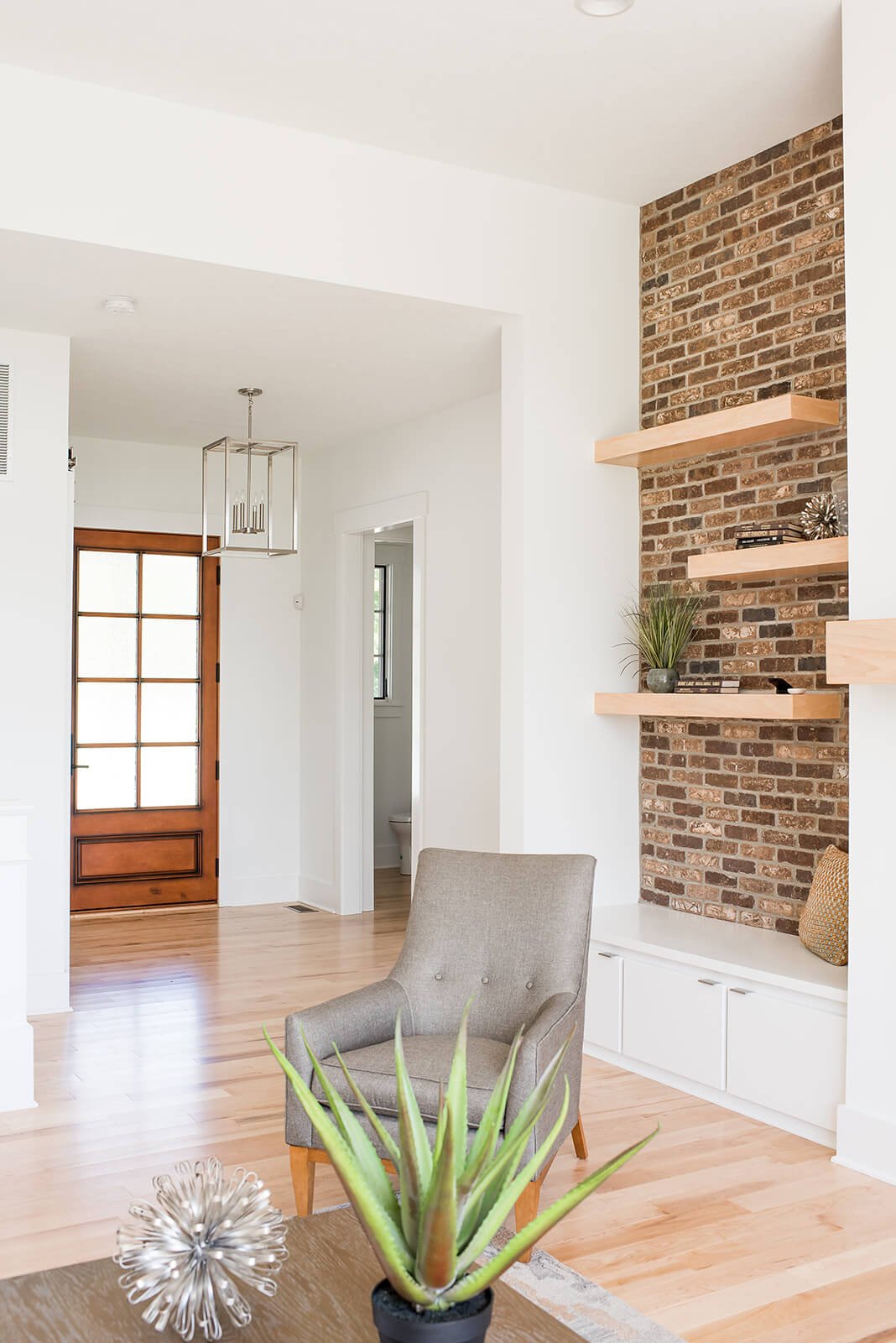What “Wood” Look Good? Considerations When Selecting Wood Finishes
Wood adds unparalleled visual interest to a space with its organic texture and tones—making it a favorite natural design element! Selecting wood finishes and features for your home can seem like a daunting task with all of the unique options available. Wood floors and furnishings are especially long-lived design elements in a home too, making it extra hard to lock into a single species or stain.Don’t fret, mixing and matching wood tones is just as cool as mixing and matching metals these days! A designer can help you establish an eclectic wood theme with everlasting appeal.
5 Things Designers Consider When Selecting Wood Finishes:

Evaluate Your Design for Opportunity
Wood is a very versatile design element with flexible applications across design aesthetics, plus there is no better way to bring the outdoors in! Evaluate the draft design of a space for opportunities to include wood furnishings—from floors, furniture, and frames to cabinets, decor and more. Then finalize which wood elements are best suited for the space, giving careful consideration to a balanced distribution of wood weight around the room.
Establish a Dominant Wood Tone
After evaluating what surfaces in your design will be wood, the next step is to establish a dominant tone. The dominant wood tone selection should be both a reflection of your home’s aesthetic and personal style preferences. This selection should be applied to the largest surface in the room, like wood floors, wood fireplace surrounds, sizable dining tables, etc.
Use Complementary Undertones
Once a dominant wood tone is selected, consider complementary undertones to use. When layering design details, matching or even coming as close as possible to matching the dominant tone, is not necessary. Complementary tones will actually highlight the dominant tone better than a match. The tones of wood finishes are often broken down into cool (grey or beige) or warm (yellow, orange or red) color families. Sticking to wood selections in the same color tone family will help bring unity to a design without worrying about an exact match, and it is more visually exciting too!
Consider Contrasting Tones and Textures
If you want to liven things up and create visual excitement, embrace a contrasting mix of wood tones and textures. A combination of light ash wood floors and dark walnut wood furnishings is a perfect example of how contrasting wood colors can make an eye-catching design statement. To elevate energy in a space, consider the unique textures available in wood products too, from rustic barn wood to smooth maple. Species specific wood grain selections, like heart pine or tiger oak, can also increase the visual interest of wood finishes in a design. A clever appointment of wood tones and textures can turn a simple design into a work of art.
Support Transitions with Textiles
Wood on wood on wood is too much, even for wood’s biggest fan! Textiles, like fabric furniture, window drapery, and floor rugs, all help to support space between wood features in a room. Side-by-side wood blends together, create design transitions with textiles to emphasize individual wood elements for maximum design impact.Contact us to gain the eye of a seasoned designer when incorporating wood elements into your space! Whether you’re starting from scratch or trying to mix pre-owned wood furnishings with new design elements, we’re here to help with our flexible design services.Happy Home. Happy Life.

